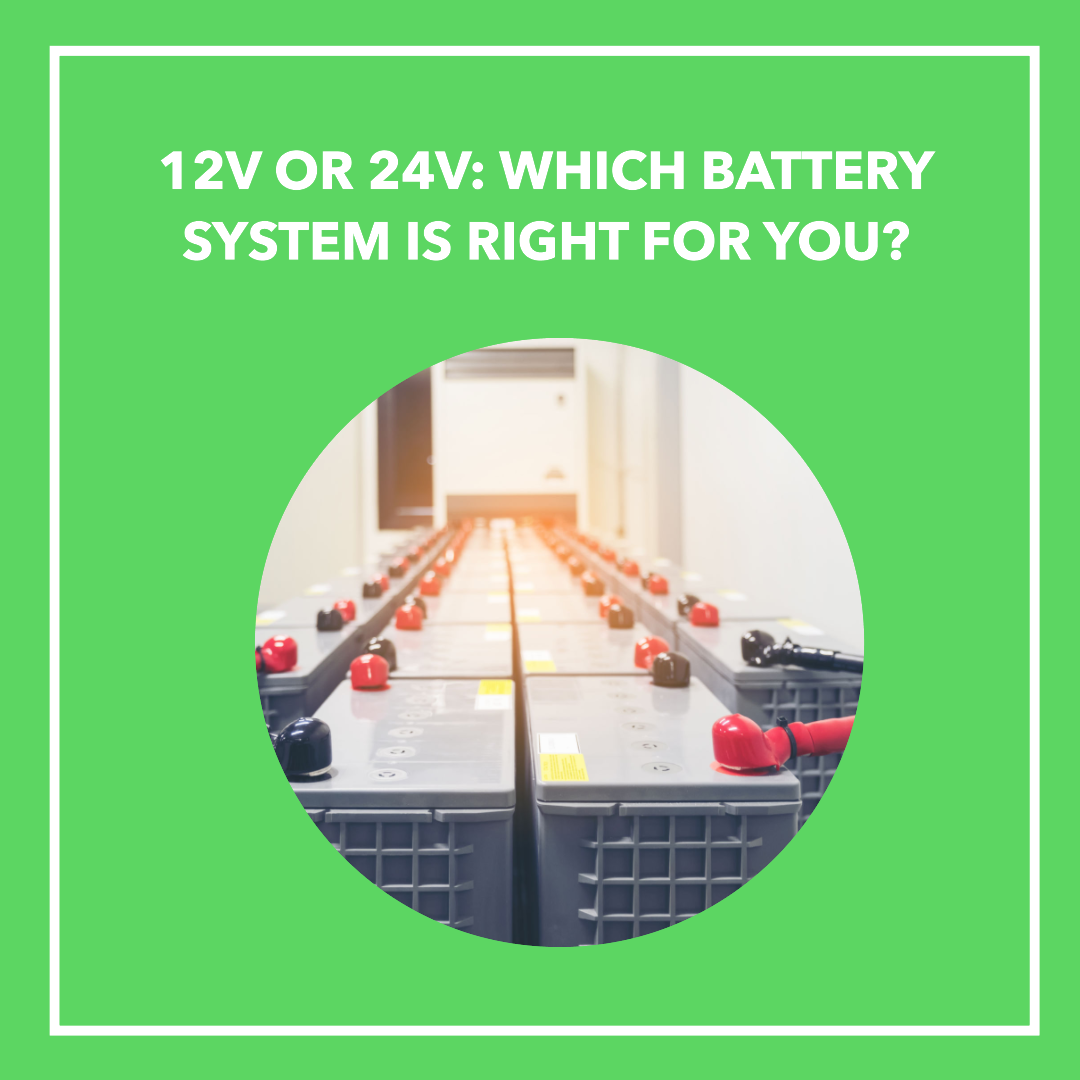Published: May 29, 2023
Updated: March 21, 2025
12V or 24V: Which Battery System is Right for You?
Choosing the perfect battery system for your vehicle, camper van, or kids’ ride-on toy can feel overwhelming. With technical jargon and endless options, it’s easy to get lost. Are you wondering, “Should I go with a 12V or 24V system? What’s the difference? Which one fits my needs?” You’re not alone—and we’re here to help.
This guide cuts through the confusion, breaking down 12V and 24V battery systems in simple terms. By the end, you’ll know exactly which system powers your setup best—whether it’s a small camper or a high-performance ride-on car.
Ready to make an informed choice? Let’s get started.
What Are Battery Systems?
A battery system is a group of batteries wired together to deliver electrical power. The two most popular setups are 12V and 24V—each with unique strengths. Watch this quick video for a visual breakdown:
12V Battery Systems: The Everyday Choice
Most vehicles—like cars, trucks, and smaller camper vans—rely on 12V battery systems. Why? They’re compact, widely compatible, and perfect for power needs under 3,000 watts. If space is tight or you’re powering basic appliances, 12V is a solid pick.
24V Battery Systems: Power and Efficiency
Looking for more oomph? A 24V system shines in larger setups. It uses less current, cutting wiring costs by up to 50% and reducing heat loss. Plus, it supports bigger solar arrays—ideal for off-grid adventurers or high-power kids’ ride-on toys.
Related: What’s the Difference Between 24V and 24V Parallel?
How to Pick the Right System
Your choice boils down to one thing: power needs. Here’s how to figure it out.
Step 1: Calculate Your Power Requirements
Grab a pen and follow these steps:
- List every device you’ll use (e.g., lights, fridge, laptop).
- Check each device’s wattage (usually on the label).
- Estimate daily usage hours per device.
- Multiply watts by hours for each device’s daily energy (Wh).
- Add it all up for your total daily needs.
Power Needs Cheat Sheet
- Under 1,000 Wh/day: 12V works great.
- 1,000–2,000 Wh/day: Weigh 12V vs. 24V based on space and budget.
- Over 2,000 Wh/day: 24V is your efficiency champ.
Pro Tip: Plan for future upgrades. Oversizing now beats running short later.
12V vs. 24V: Quick Comparison
| Feature | 12V System | 24V System |
|---|---|---|
| Best For | Small setups (<3,000W) | Large setups (>3,000W) |
| Space | Compact | Larger footprint |
| Wiring Costs | Higher | Lower (up to 50% less) |
| Efficiency | Good for small loads | Better for high power |
Kids’ Ride-On Toys: 12V or 24V?
Buying a ride-on car for your little one? Voltage matters here, too.
- 12V: Perfect for preschoolers. Tops out at 5 mph—safe and manageable. Explore our 12V Ride-On Collection.
- 24V: Built for older kids craving power. Hits up to 6 mph with better efficiency. Check out our 24V Ride-On Collection.
Related: 24V vs. 24V Parallel Ride-On Cars
Key Factors to Consider
- Space: 12V batteries are smaller; 24V needs more room.
- Cost: 24V saves on wiring but may cost more upfront.
- Heat: 24V runs cooler, wasting less energy.
- Compatibility: 12V suits most vehicles; 24V supports advanced gear.
Wrap-Up: Your Perfect Power Match
Whether it’s a camper van or a kids’ ride-on toy, the 12V vs. 24V debate comes down to your needs. Small setup? 12V keeps it simple. Big power demands? 24V delivers. With this guide, you’re ready to choose with confidence.
Frequently Asked Questions
Which is better: 12V or 24V?
It depends on your power needs. 12V is ideal for smaller setups under 3,000W—like basic camper vans or preschool ride-on toys. 24V excels in larger systems, offering efficiency and lower wiring costs.
Can I switch from 12V to 24V later?
Yes, but it’s a project. You’ll need to replace components (batteries, inverters) and rewire your setup. Consult a pro to avoid costly mistakes.
Will a 24V battery work in my 12V ride-on toy?
No—mixing voltages can fry your toy’s electronics. Check the manual or our 24V Collection for compatible models.
How do I know if my camper needs 24V?
Calculate your daily watt-hours. Over 2,000 Wh? 24V saves money and energy long-term. Under 1,000 Wh? Stick with 12V.
Need more help? Dive into our RiiRoo wonderland or hit up our Live Chat!
Questions? We’ve Got Answers!
Loved this guide? Explore more at RiiRoo.com or chat with us live!





Share:
How Much Does a Go-Kart Cost in the UK? 2025 Prices for Kids and Adults
Kids’ Ride-On Car Battery Maintenance: Extend 12V Battery Life in 2025